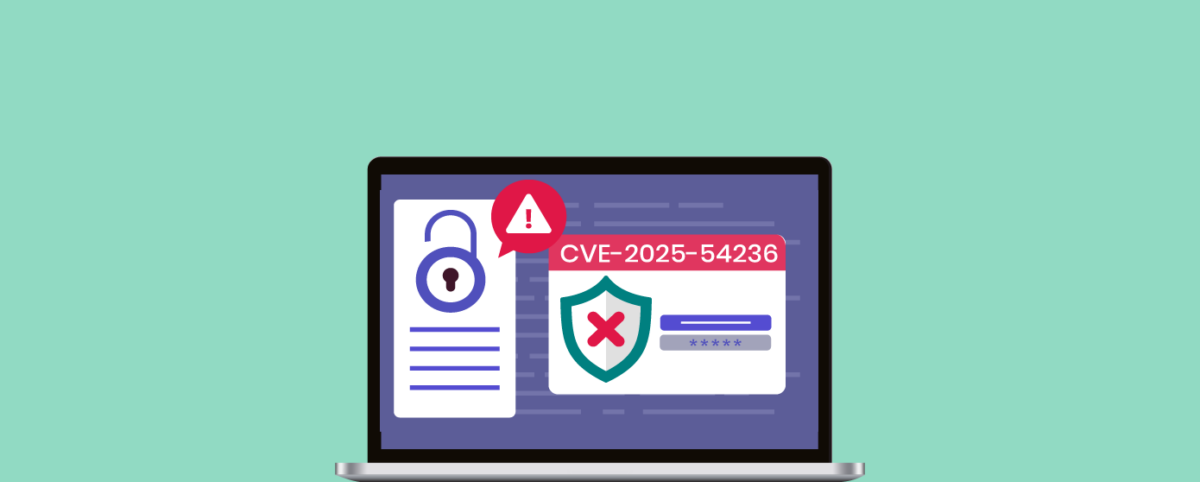Understanding NIST Cybersecurity Framework (CSF) 2.0 Core Requirements and How AppTrana WAAP Helps
The NIST Cybersecurity Framework (CSF) 2.0 provides a structured, risk-based approach to manage and reduce cybersecurity threats. It applies to organizations across industries, helping them identify risks, protect assets, detect threats, respond to incidents, and recover efficiently.
CSF 2.0 expands its focus to include governance, supply chain security, and continuous improvement, making it more relevant for today’s interconnected digital landscape.
AppTrana WAAP (Web Application and API Protection) supports multiple CSF 2.0 core requirements, offering advanced scanning, monitoring, incident response, and compliance capabilities to help organizations strengthen their cybersecurity posture.
Key Requirements of NIST CSF 2.0
1. Governance: Cybersecurity Risk Management Performance (GV.OV-03)
Requirement:
Evaluate and review organizational cybersecurity risk management performance to determine adjustments needed.
How AppTrana Helps:
Continuous Asset & API Discovery tied to KRIs – AppTrana automatically discovers and inventories web applications and APIs, including shadow and deprecated endpoints. These discoveries directly feed Key Risk Indicators (KRIs) such as the ratio of protected vs. unprotected assets, exposure of outdated APIs, and visibility gaps in the attack surface.
Risk validation through testing – Always-on DAST for web and APIs, augmented with manual penetration testing, validates what is truly exploitable. You get risk-ranked findings, evidence, and retest/closure verification, driving KRIs like open criticals, exposure window, and remediation SLA adherence.
Quarterly Customer Success Reviews (your extended SOC) – The Customer Success team conducts deep-dive quarterly reviews, acting as an extension of your SOC. These sessions go beyond reporting past incidents; they focus on forward-looking protection strategies, including:
- Reviewing current attack and defense posture with data-backed KRIs.
- Discussing new risks from APIs, origin exposure, and bot-driven attacks.
- Deploying proactive mitigation methods like SwyftComply patches, origin server protection, and policy tuning.
- Operational Resilience Planning: Ensuring backup protections like failover plans, and geo-blocking are aligned with current risks.
Executive-Ready Reporting: Organizations receive comprehensive, audit-friendly reports that include asset inventories, KRI dashboards, and proof of protection updates. In addition, the Zero Vulnerability Report delivered as a result of patching all open vulnerabilities, makes it easier to evaluate governance performance and pass compliance checks with confidence.
2. Supply Chain Security Integration (GV.SC-03, GV.SC-09)
Requirement:
- Integrate supply chain cybersecurity risk management into enterprise risk management, risk assessment, and improvement processes.
- Monitor supply chain security practices throughout the product/service lifecycle.
How AppTrana Helps:
AppTrana supports supply chain security by detecting vulnerabilities in applications and APIs developed or managed by third parties. In addition to server-side scanning, AppTrana’s Client-Side Protection evaluates all JavaScript running on a web application.
This ensures that malicious or compromised scripts often a major vector in supply chain attacks like Magecart or Formjacking are detected and blocked in real time. Continuous monitoring of script behavior helps prevent unauthorized data access, ensuring that supply chain risks are addressed not just at deployment but throughout the product’s lifecycle.
3. Continuous Improvement (ID.IM-01, ID.IM-02)
Requirement:
Identify improvements in cybersecurity processes from evaluations, security tests, and exercises, including collaboration with suppliers and third parties.
How AppTrana Helps:
AppTrana’s in-built DAST scanner performs deep, automated scans of external-facing applications to detect vulnerabilities with high accuracy. The platform uses an AI-powered crawler to intelligently navigate complex application flows, ensuring no critical functionality or hidden endpoint is missed during testing.
Every scan finding is manually verified by security experts, eliminating false positives before results are shared. This “zero false positive guarantee” ensures that teams focus only on genuine risks, streamlining remediation.
Additionally, vulnerabilities identified during security tests can be remediated instantly with SwyftComply, ensuring that security improvements are continuously integrated across all CSF functions.
4. Threat and Risk Assessment (ID.RA-03, ID.RA-05)
Requirement:
Identify threats, record them, and assess their likelihood and impact to prioritize risk response.
How AppTrana Helps:
AppTrana combines its DAST scanner with manual penetration testing to uncover both common and complex vulnerabilities in external-facing applications. The results are integrated with AcuRisQ, enabling risk prioritization based on business context so critical vulnerabilities affecting high-value assets are addressed first.
For remediation, AppTrana WAAP comes with SwyftComply, allowing organizations to virtually patch all open vulnerabilities efficiently. This ensures that every identified risk is documented, prioritized, and remediated without delays.
5. Adverse Event Analysis (DE.AE-02 to DE.AE-08)
Requirement:
Analyze potentially adverse events, correlate information from multiple sources, understand their scope, integrate threat intelligence, and declare incidents when necessary.
How AppTrana Helps:
For applications onboarded on AppTrana WAAP, detailed logs are captured and stored to support forensic analysis. These logs are retained for one year, enabling effective incident investigations. With SIEM integration, security teams can seamlessly correlate attack data, assess incident impact, and make well-informed decisions.
Beyond raw log data, its threat intelligence adds enriched context by drawing from a global database of attack patterns, emerging exploits, and malicious IP reputations, allowing faster detection of sophisticated threats.
With a fully managed model, security experts continuously monitor events, proactively investigate anomalies, and provide clear incident declarations along with actionable remediation guidance. This combination of automated intelligence and human expertise ensures adverse events are not only detected but fully understood and addressed in real time.
6. Incident Recovery Communication (RC.CO-04)
Requirement:
Share public updates on incident recovery using approved messaging and communication methods.
How AppTrana Helps:
AppTrana’s centralized logging and reporting capabilities give organizations accurate and timely incident data, ensuring recovery updates are fact-based and align with approved communication strategies.
7. Incident Analysis and Management (RS.AN-03, RS.AN-06, RS.AN-08, RS.MA-03)
Requirement:
- Determine the root cause of incidents.
- Preserve records’ integrity during investigations.
- Estimate the magnitude of incidents.
- Categorize and prioritize incidents.
How AppTrana Helps:
AppTrana WAAP’s forensic logs are retained for one full year and provide a complete incident trail, enabling accurate root cause analysis, secure evidence preservation, and proper incident categorization for faster response.
8. Continuous Monitoring (DE.CM-01)
Requirement:
Monitor assets to detect anomalies, indicators of compromise, and adverse events.
How AppTrana Helps:
AppTrana WAAP provides real-time attack detection and continuous monitoring of web applications and APIs, leveraging AI-powered anomaly detection to spot unusual traffic patterns, suspicious requests, and potential indicators of compromise (IoCs).
The platform integrates with threat intelligence and IoC feeds, correlating known malicious signatures and network-level indicators with live application behavior. This allows AppTrana to automatically block malicious requests before they cause damage, reducing breach detection time and enhancing incident response.
By centralizing IoC management, automating detection, and applying machine learning to behavioral analysis, AppTrana ensures organizations maintain continuous, proactive defense against both known and emerging threats.
Strengthening CSF 2.0 Compliance with AppTrana WAAP
NIST CSF 2.0 is more than a compliance checklist. It is a blueprint for building cyber resilience in a rapidly evolving threat landscape.
AppTrana WAAP helps organizations:
- Identify threats and vulnerabilities.
- Monitor applications continuously.
- Respond to and recover from incidents faster.
- Improve security processes based on real-world data.
- Generate zero-vulnerability reports to seamlessly demonstrate compliance during audits and meet regulatory requirements without last-minute gaps.
Whether you are addressing governance, supply chain security, or incident response, AppTrana ensures your organization meets CSF 2.0 requirements while staying one step ahead of cyber threats.
Stay tuned for more relevant and interesting security articles. Follow Indusface on Facebook, Twitter, and LinkedIn.

 August 21, 2025
August 21, 2025






